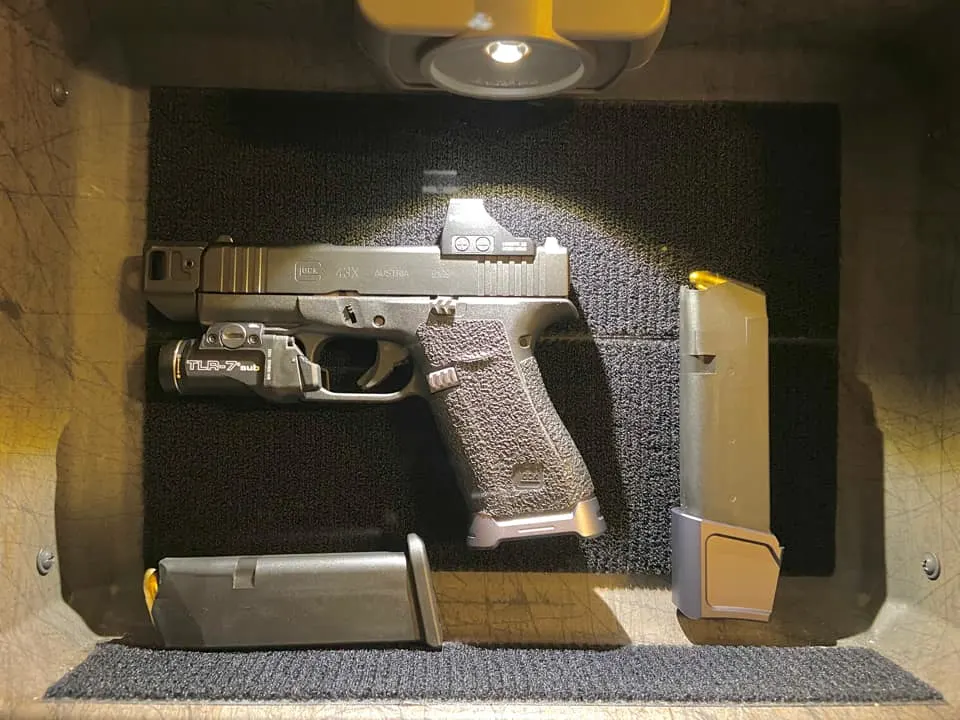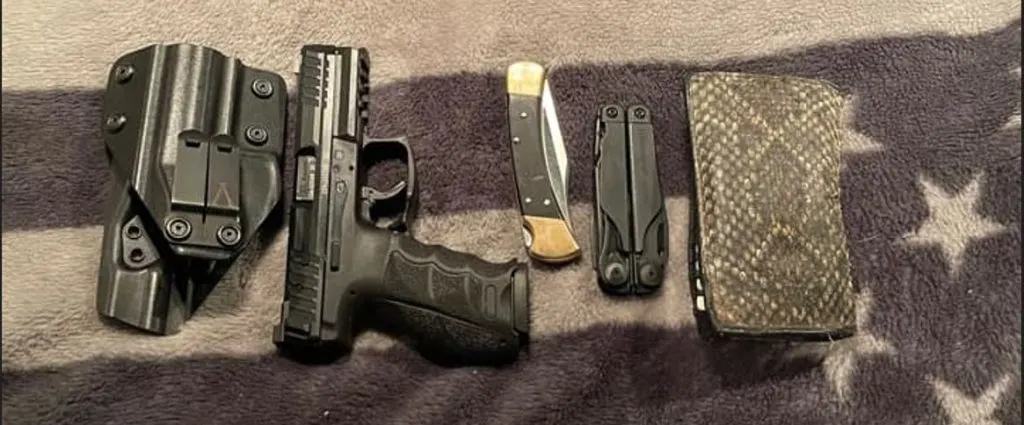A Glock is one of the most popular handguns out there, and gun enthusiasts know that there are many advantages to owning one. However, as with anything, mechanical issues can still arise. If your Glock trigger is not resetting, it is natural to be frustrated and wonder how you can fix the issue.
A Glock not resetting can be caused by a variety of issues, and each one will have its own strategy to resolve the problem. Keep reading to learn more about what might be causing your Glock trigger to not reset, and some steps you can take to get things working properly once more.

Why Your Glock’s Trigger Will Not Reset
As a Glock owner, you already know the benefits of these amazing guns. Their lightweight structure and accuracy make them a joy to shoot. But even so, there are still times when your Glock might have a problem.
One of the most common problems with a Glock pistol arises when the trigger does not reset. This can be incredibly frustrating and interrupts your ability to shoot.
There are a few possible strategies that you can use to fix your problem. The following sections will discuss each one, as well as the underlying issues that may be happening.
Here’s a video showing one possible fix, with much more info below:
I use either Brownells, Palmetto State Armory, or Optics Planet to buy parts, that way I always know what I’m getting and that it will actually show up.
Where to Start: Dismantle and Clean the Gun
If you have not already done so, the first thing you should do is dismantle your gun. Follow these steps:
- Follow safety protocol: Before you begin dismantling your Glock, safety must come first. Make sure the gun is pointed away from any living thing. Keep your finger away from the trigger, put on safety glasses, and double check to ensure that the magazine is released and removed.
- Open the slide: Opening the slide is a necessary step for taking apart your gun, and is also a common area where issues may arise with the trigger reset. Hold the slide open, and check the chamber for ammunition.
- Remove the slide: Once you’ve opened the slide, you can then remove it. To do this, pull down the slide lock and push the slide forward until it separates from the receiver.
- Remove the barrel: Push the spring forward and detach the barrel from the slide by gently moving it sideways. You may need to also raise it.
- Clean the gun: Carefully go over each part of the Glock using a gun cleaning kit. Check for any obvious damages or buildup of residue that may be causing the trigger reset issue.
- Put the gun back together: Reassembling your Glock is as simple as reversing the prior steps. Once it is cleaned and put together once more, you can try to fire it and see if the trigger reset issue is still happening.
Oftentimes a Glock just needs a good cleaning to get it working like new again. If you find that your trigger is not resetting, this should be your first course of action as it is also the easiest one.

Parts Involved: Change the Trigger Spring
Many times, when a Glock trigger does not reset, it is because of an issue with the trigger spring. The spring is a necessary part of the gun that allows the trigger to reset automatically.
- When you disassemble your gun, check to see if there are any noticeable problems with the spring.
- This could include corrosion or bending.
- If you see something, it is essential to change the spring.
- You may have a spare spring or you can purchase one from where you buy your gun needs.
Additionally, if you have recently replaced your old spring for a new one with extra power, this could be causing the issue. You should then replace it with one that has the same power as the previous working one.
Replacing the spring should be fairly straightforward, and might be worth trying even if you are not sure if this is the issue. However, be very careful to install the spring properly as incorrect installment could result in the issue continuing.
Parts Involved: Check Connectors and Pin Lugs
Connectors and pin lugs are essential parts of a Glock’s composition, and without them your gun will not work. Additionally, if they are misaligned or crooked, this could cause the issue with your Glock not firing.
To begin, check the connector. If the connector is bent too far inwards, it can prevent the spring from doing its job and will therefore cause the issue with the trigger not resetting. If it is bent, it will need to be realigned or potentially replaced depending on the degree of misalignment.
The pin lugs are also a common area where problems might come up. Double check that the pin lugs are covering most of the trigger bar cruciform. If they are not, they may need to be realigned so that proper engagement is achieved.
Talk to a Gunsmith
If you have any concerns while repairing your Glock, your first point of contact should be a qualified gunsmith. This is especially true if you have limited experience with fixing Glocks in the past.
Improperly replacing parts or reassembling your gun could have potentially destructive consequences, and you must always prioritize safety when dealing with such a powerful pistol.
A gunsmith can provide consultancy on what is happening with your Glock. They may be able to talk you through the repair, help you find spare parts, or repair it for you if the fix is too intensive for a DIY approach.
I use either Brownells, Palmetto State Armory, or Optics Planet to buy parts, that way I always know what I’m getting and that it will actually show up.
Conclusion
Nothing is more frustrating than when things do not work properly, and this feeling can arise when your Glock’s trigger is not resetting. Fortunately, this is often something that can be solved by taking apart the gun or replacing one or two small parts.
It may take a little time and experimentation to know what is wrong with your Glock, but these high-quality pistols cannot be kept out of commission for too long. With a few quick fixes and potentially the help of a knowledgeable gunsmith, you will soon be back out at the shooting range.

